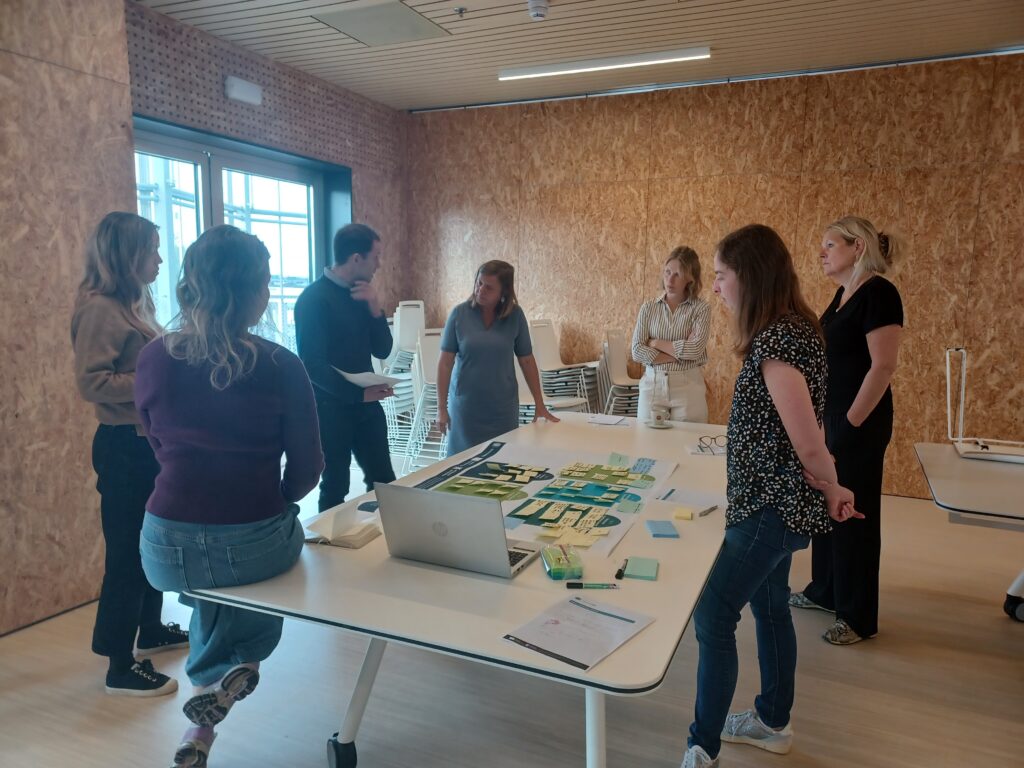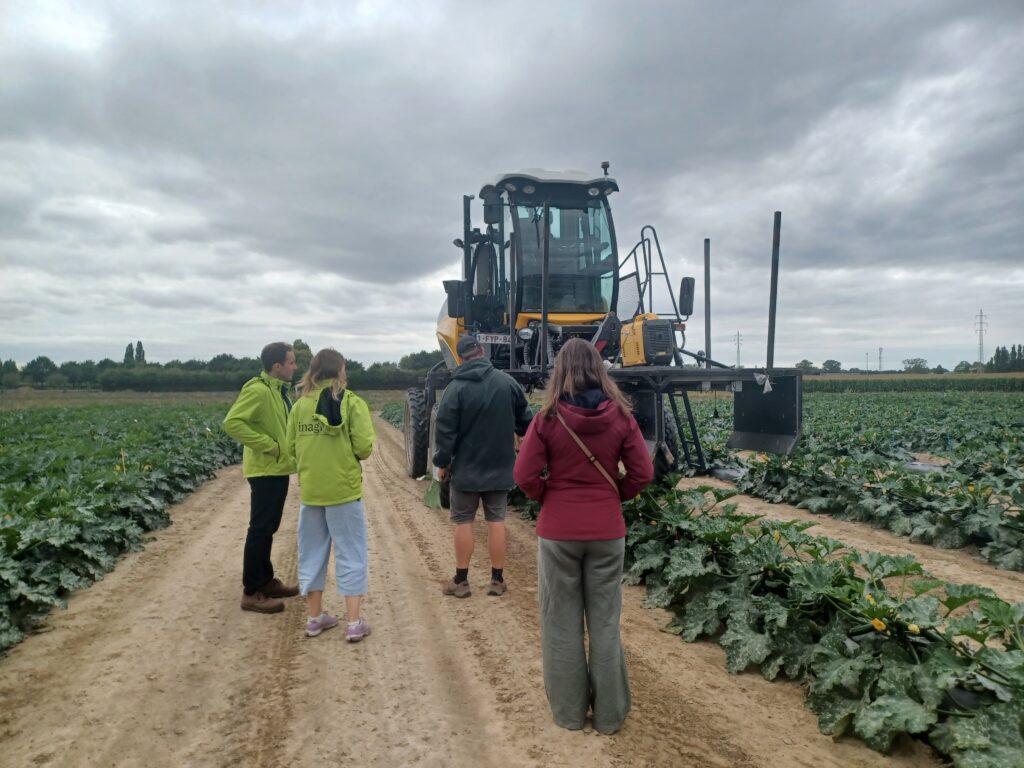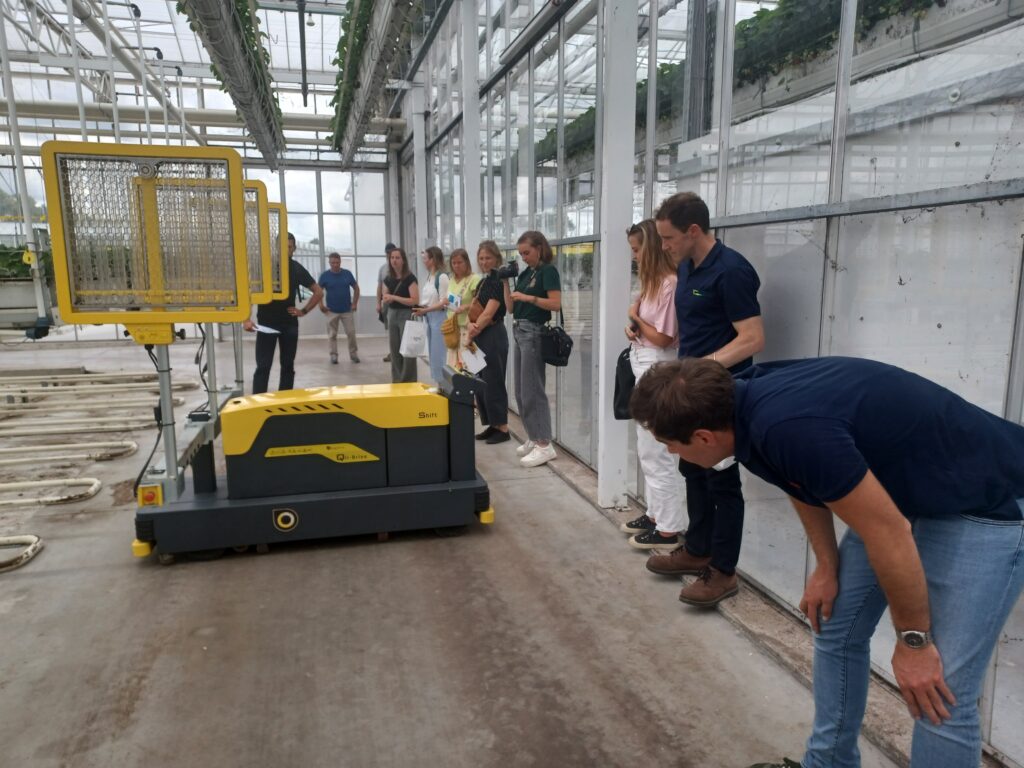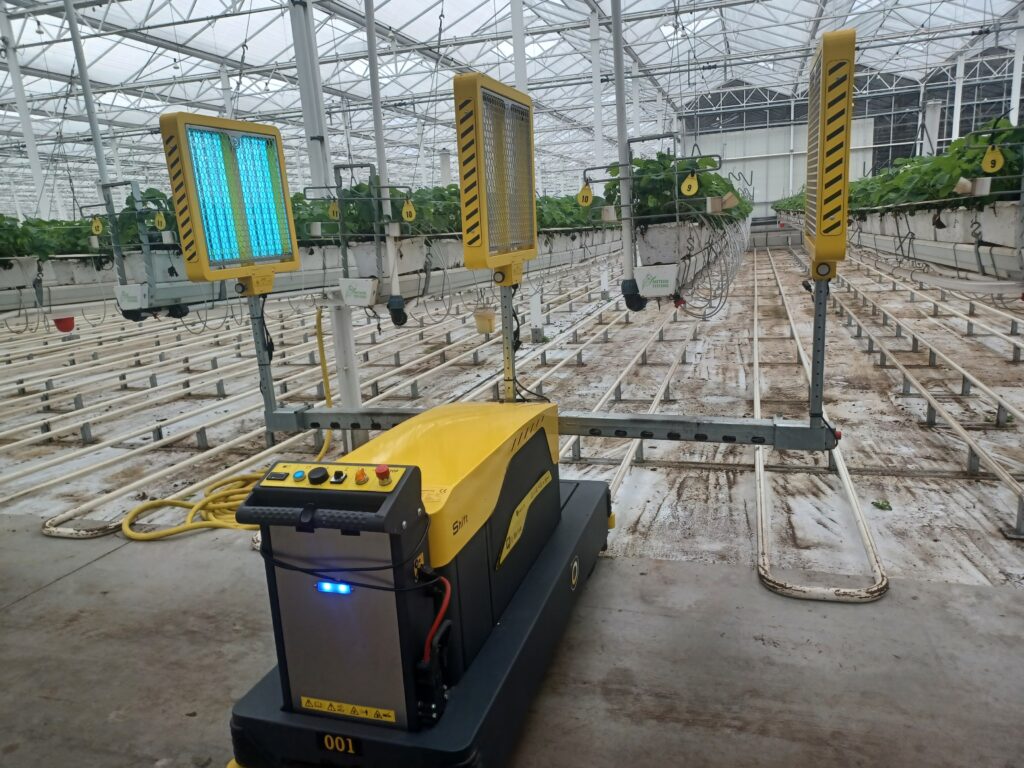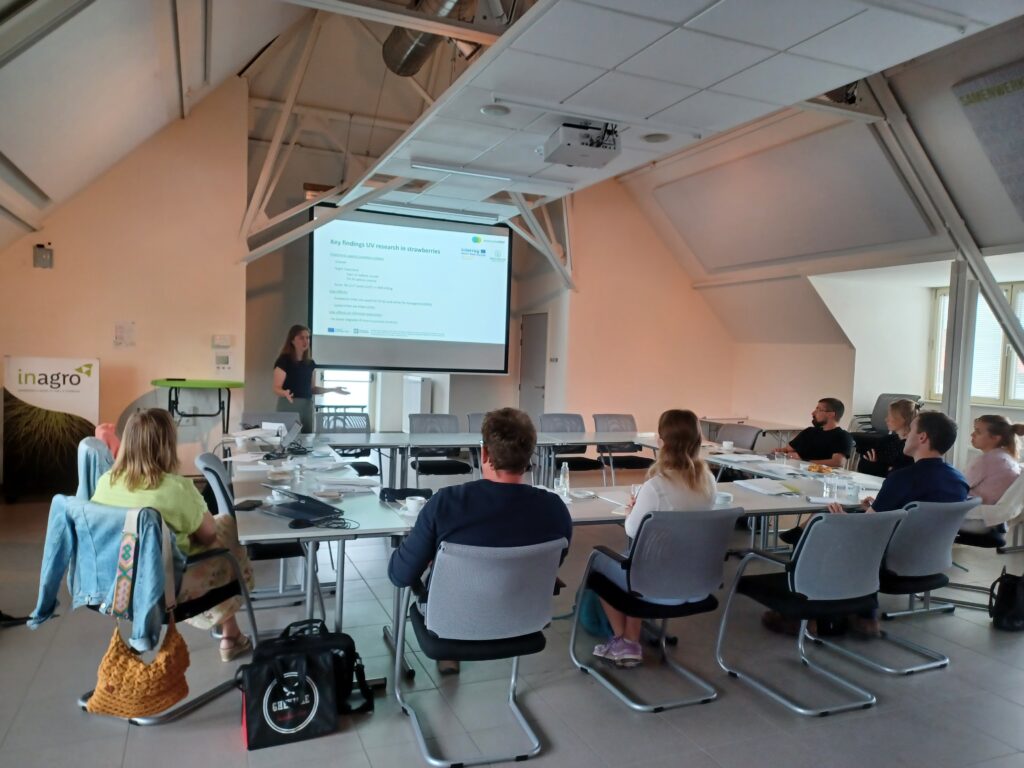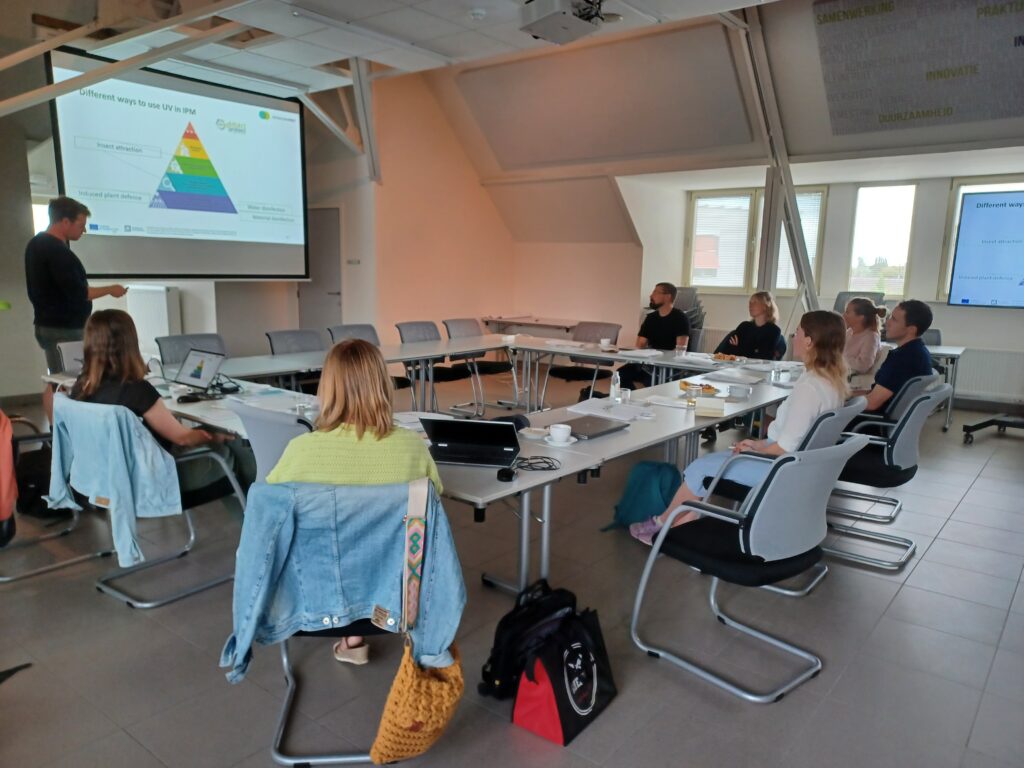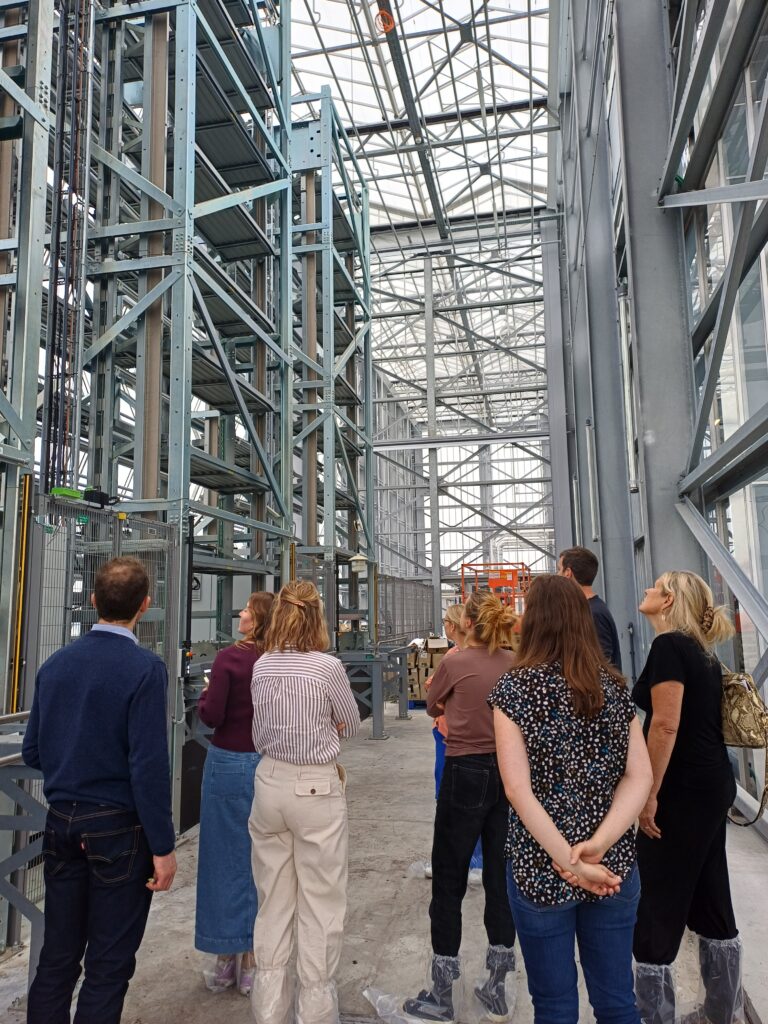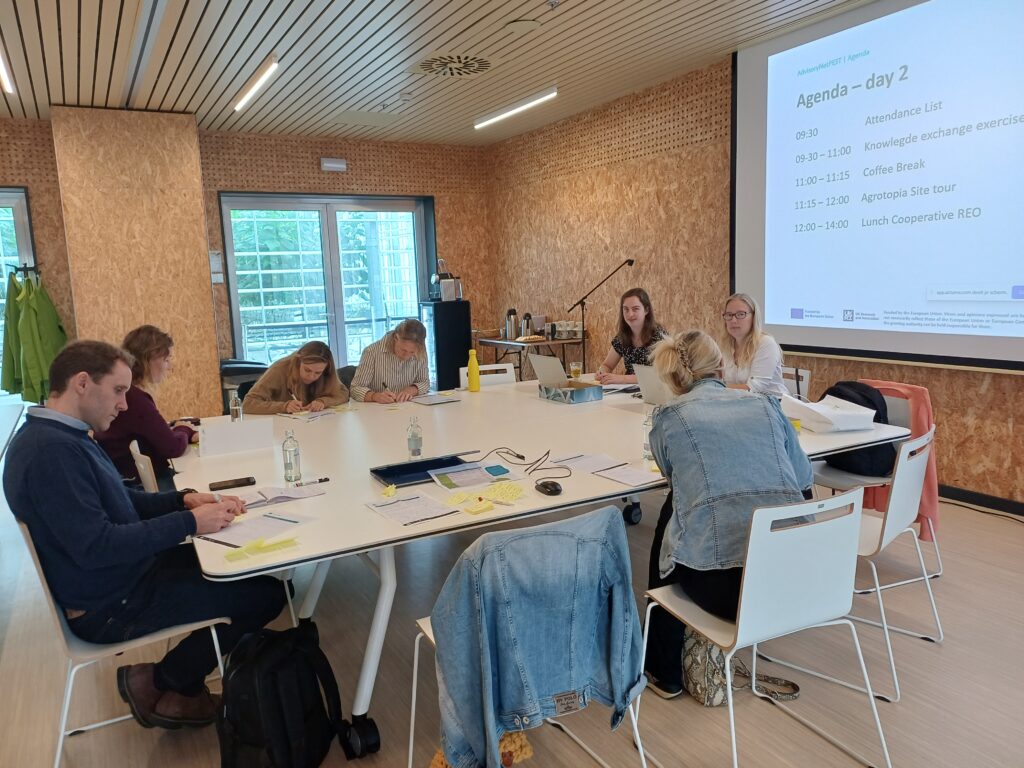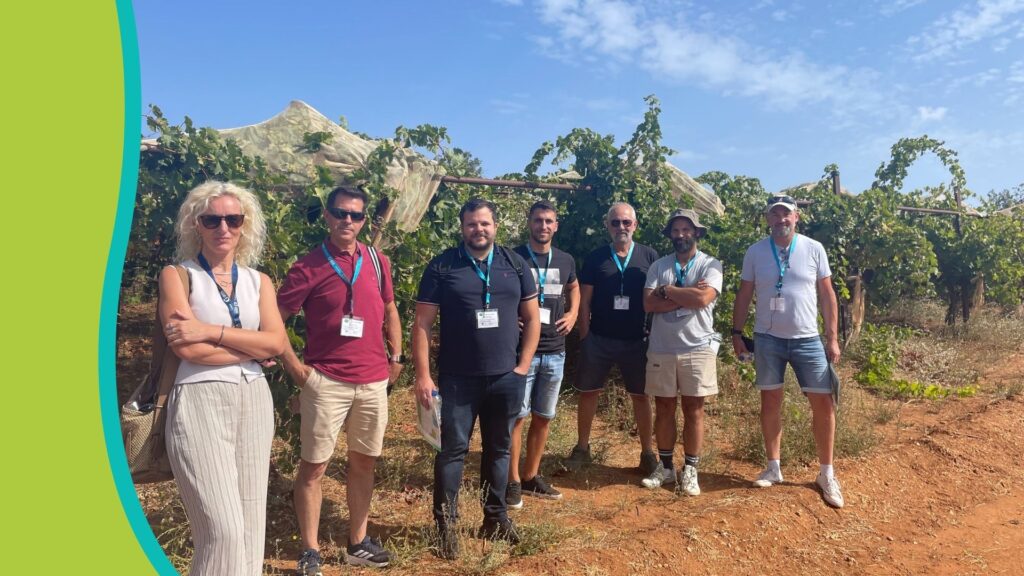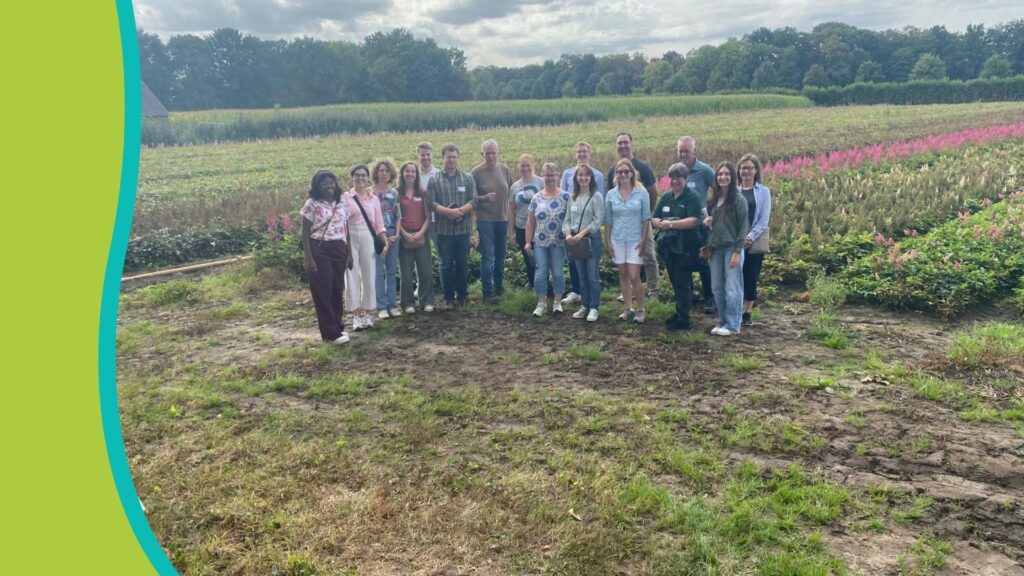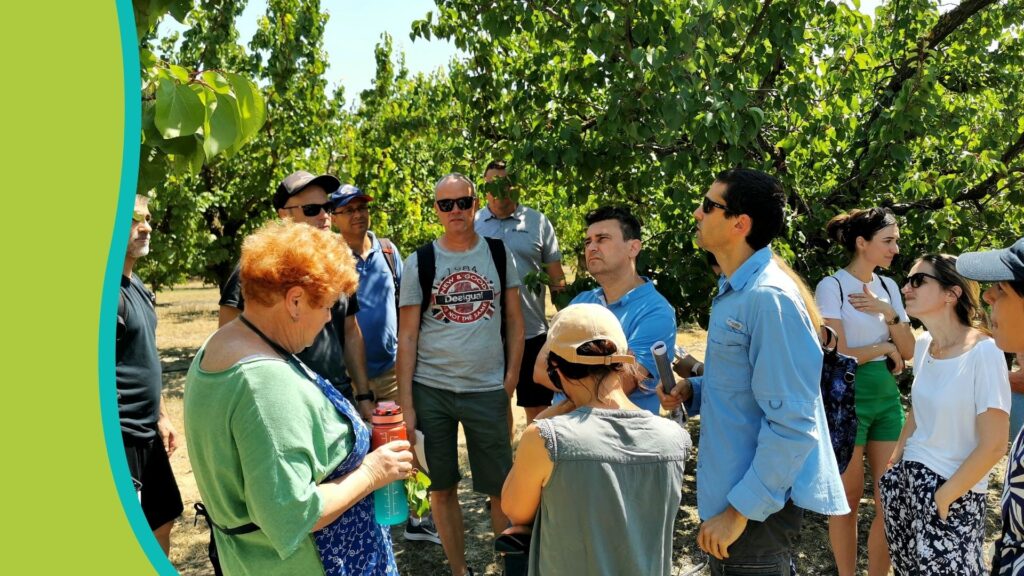The cross-visit in Belgium gathered a group of ten participants from the Netherlands, the United Kingdom, and Ireland. Hosted by INAGRO, the visit centred on the farm of Randy Degezelle, who demonstrated how UV-C robots are being used to control powdery mildew in strawberries and zucchini. Randy explained that UV-C light damages the fungal cells, halting their growth and significantly reducing the need for chemical fungicide sprays. The method works best at night, and the robot completes its rounds automatically, delivering targeted treatments in the greenhouse.
Farm Context
Randy manages a 12-hectare strawberry operation that has evolved significantly since the early 2000s. The farm originally belonged to his parents, and between 2003 and 2007 he gradually shifted from vegetables to strawberries. Today, he cultivates five varieties—Sonata, Sonsation, Elsanta, Falco, and Karima—each chosen for its suitability to different production windows. All strawberries are grown on gutters, with 2.5 hectares under glass and the remaining area in plastic greenhouses. Randy produces most of his own plants, prioritising plant health and traceability, and works closely with advisors from Delphy. The farm employs 47 people and relies on precise, organised workflows to maintain year-round production.
In 2023, Randy invested in a UV-C robot to operate inside his glass greenhouses, where he uses pipe rails. This system allows the robot to move independently and perform consistent nightly treatments.
Adapting and Implementing the Novel Approach
The transition required relatively few human resources, as the robot is designed for autonomous use. The machine, however, represented a significant financial investment: 29,000 euros, with an additional 8,000 euros for the lamps. Robots designed for plastic greenhouses are far more expensive—between 100,000 and 150,000 euros—because they require sensors, caterpillar tracks, or high-precision GPS to move over grass or uneven terrain. As a result, Randy currently uses the UV-C system only in his glasshouses.
Implementing the robot required several infrastructure modifications. Sensors were installed on the concrete floor to guide the robot’s movement, and adjustments were made to the rail system to ensure smooth navigation. At the end of each greenhouse row, the machine also needed modifications so it could effectively reach the final plants.
One of the main challenges Randy faced was the lack of technical guidance from the company that sells the robot. No official recommendations were provided for dose rates, treatment settings, or crop-specific adaptation. Delphy advisors supported him, but even they had to rely on trial and error. Fortunately, Randy found the machine intuitive and easy to use, even if the learning process required patience.
He would also like to apply the technology in his plastic tunnels, but the existing machine cannot operate there. For that, he would need a much more expensive UV-C robot with caterpillar wheels and advanced sensors—so he is waiting to see how the market and technology evolve before investing.
Results and Experience
The benefits of the UV-C approach quickly became visible. Randy was able to reduce pesticide applications against powdery mildew by about 50 percent, while avoiding the risk of fungicide resistance. The treatments had no negative effect on crop yield or quality. In fact, plant growth became more vigorous: conventional sprays form a layer on the leaf surface that can slightly slow growth, but UV-C avoids this problem entirely. The technology also helps Randy achieve his goal of using fewer than five active ingredients on strawberries—although, as he noted, there is currently no financial reward for this effort.
Despite its advantages, the system does come with drawbacks. The corridor must be completely cleared before the robot starts working, which means Randy and his team must empty the space and remove trays every evening. The robot also requires uninterrupted access and cannot navigate obstacles. For growers without a rail system, the cost of a suitable robot can be extremely high. Spraying is still necessary at certain times, so the machine is not a complete substitute for chemical treatments. And although the robot works autonomously, transporting it between compartments at night can be disruptive—though Randy chooses not to interrupt his sleep for this.
Future Modifications
Randy sees potential improvements in redesigning the positioning of the lamps, allowing better treatment of the upper parts of the plants. He is also following developments in robots equipped with caterpillars and GPS for use in plastic tunnels, although at present these systems are prohibitively expensive. As technology advances and adoption increases, he hopes the costs will drop and options will expand.
Advice from the Farmer and Advisor
When asked what advice he would give to other farmers considering the same approach, Randy was direct and confident: “Just buy it. No doubt.”
The advisor present during the visit added a concise remark: “When confronted with resistance, there is no other option.” This reflects the growing need for non-chemical solutions as resistance issues continue to rise across horticultural crops.
Resources, Skills, and Infrastructure
The main limitations relate to technical challenges in greenhouses without rails. Robots for uneven surfaces require expensive features such as caterpillars, sensors, or GPS guidance, which dramatically increases costs. Electricity, however, is not a constraint, and operating the machine is relatively inexpensive. As more growers adopt the technology, advisory services are gradually evolving to provide better support and optimisation strategies.
Looking to the future, Randy believes there will be market opportunities for low-residue or residue-free strawberries—a potential selling point that is not yet financially rewarded. He also highlighted the importance of integrating UV-C with other biological applications to maximise adoption and effectiveness.
Training needs revolve around practical experience: farm visits, on-farm workshops with professional advisors, hands-on demonstrations, and reliable aftersales technical support from suppliers.
